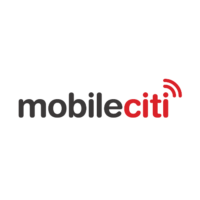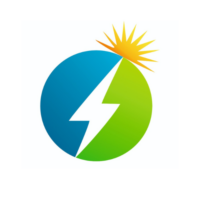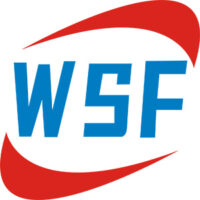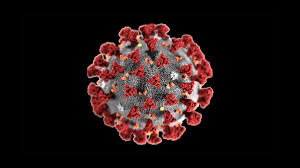Basic Details
| TeslaSafetech | |
| siachen.com/teslasafetech | |
| Proprietorship | |
| 2013 | |
| IN | |
| TN | |
| Chennai | |
| Bangalore |
Communication
| No: 13, Anjaneyar Koil St, West Saidapet, Chennai – 600 015, India. | |
| +9190035 24967 | |
About Business
Business Summary
Tesla Safe tech - Fire Safety Products - Chennai, Tamil Nadu, India.
Business Description
TeslaSafetech - Acknowledged as Trailblazers and a Prominent Force in the Fire and Security Sector; Perpetually Investigating Global Fire Safety Patterns and Innovated Solutions – Chennai, India.
TESLA SAFETECH, an organization dedicated to ensuring fire safety across India, with a special focus on the South India region!!
Because of our extensive professional expertise stretching all the way back to 2013, we are recognized as pioneers and are among the market leaders in this industry across the South India Region of our country. TESLA SAFETECH is an organization in India that is associated with the field of fire safety. Over the course of the past half a decade, we have conducted ongoing research into the latest global fire safety trends and engineered products. These products are now recognized as industry standards within the fire safety business. Tesla's fire safety solutions are meant to be technically outstanding, as well as exceptionally safe and reliable in the event of a fire in the real world. This is a design goal for all Tesla products. To ensure the integrity of the location, it is essential to focus on safety in addition to many other aspects, whether one is speaking of the workplace, the house, or the industrial setting. If the damage is overlooked, it has the potential to result in a significant loss of life as well as property. As a result, everyone should give serious thought to the possibility of creating safety preventative measures in their respective locations. A lack of understanding of the possible factors that led to the accident may result in a range of problems.
Everyone should have a fundamental understanding of both the causes and the impacts of the problem. This article will educate you on the significance of fire safety and the steps you need to take to save your loved ones, your property, and your friends from the perils of fire. Accidents can take place in any setting, at any moment, and involve anyone. It was not possible to describe and schedule something in such a way that it had to take place at the precise time that was indicated. Consequently, everyone in the area needs to be aware of the fire detection systems that are currently in place. TESLA SAFETECH is an organization that is committed to guaranteeing fire safety throughout India, with a particular emphasis on the South India region. Since 2013, we have been at the forefront of the fire safety sector, pioneering new solutions that have become the industry standard for ensuring the safety of both people and property. Our journey has been characterized by assiduous research, innovative engineering, and an unyielding dedication to make the world a safer place.
Tesla Safetech: The Picture is Business Representational
How We Came to Be and Our Development:
TESLA SAFETECH was founded in 2013 in Chennai, India, as a modest venture with the goal of redefining fire safety standards in our country. TESLA SAFETECH's headquarters are still located in Chennai. We have not only been successful in realizing this vision over the course of the previous decade, but we have also established ourselves as a market leader in the South India region.
Our journey started with a profound comprehension of the significant function that fire safety plays in each of our lives. Accidents can happen at any time, and if you aren't ready for them when they do, the results could be devastating. Having gained this understanding, we set out on a goal to deliver the most dependable and technologically advanced fire protection products and services possible.
It is of the utmost importance, in the field of fire safety, to remain one step ahead of the curve. We had an early realization of this fact, and as a result, we made unceasing research and innovation our guiding principles. Over the course of the past half a decade, we have meticulously tracked developments in fire safety around the world, made use of the most recent innovations, and engineered goods that not only adhere to but beyond the requirements established by the industry.
Our dedication to innovation encompasses each and every facet of our company, from the creation of new products to the way we interact with our clients. We are convinced that if we push the limits of what is now feasible, we will be able to better safeguard our communities from the devastation that may be caused by flames.
Safety is not merely a catchphrase here at TESLA SAFETECH; rather, it is our way of life. Not only are our products technically superior, but they are also built to be extremely safe and reliable in the event of a fire as it occurs in the real world. We are aware that in the event of a fire, every second is of the utmost importance, and as a result, our solutions have been developed to enable a prompt and efficient response, thereby protecting both lives and property.
Our own internal operations receive the same level of attention to safety that we do. Our production procedures are held to the highest possible safety standards at all times, and our workforce receives extensive training to ensure that safety remains a top priority at all times. Our dedication to safety shines a light for both our clients and business partners, as we are firm believers in the concept of leading by example.
Having a Comprehension of the Significance of Fire Safety:
The need of taking precautions against fire is something that simply cannot be overstated. It is not simply a problem for corporations or other types of organizations; it is a problem for every single household, every single town, and every single person. Neglecting fire safety measures can have severe effects, including the destruction of property, the loss of lives, and the disruption of mental stability.
It is necessary to have an understanding of the probable causes of accidents as well as the far-reaching ramifications of these mishaps in order to have a genuine appreciation for the significance of fire safety. This comprehension is not something that is confined to specialists; rather, it ought to be considered fundamental knowledge that is shared by all. In the following paragraphs, we will delve deeper into the significance of fire safety and discuss the various ways in which you can safeguard your loved ones, your property, and your friends from the perils of fire.
The Effects That Are Caused By Accidental Fires:
Accidents do not care who is involved or where they take place; they can occur at any time, in any place, and to anyone. Because of the particularly random nature of fire mishaps, it is impossible to foresee when or where they might take place or to set any kind of schedule for them. The grim reality is that fire accidents are not a matter of 'if' but of 'when.' As a result, it is incumbent upon every individual and community to be aware of the fire detection and safety systems that are in place.
Accidental fires have far-reaching and devasting effects on communities and individuals. They are as follows:
Loss of Precious Human Life: The most heartbreaking consequence of a fire disaster is the terrible loss of valuable human life. Especially in residential areas, fires can spread very quickly, giving people very little time to get out of the way. People who have difficulty moving around, the elderly, and children are particularly at risk.
Damage to Property It may take only a few minutes for a fire to consume an entire structure, a home, and all of its contents. Losing one's property can have a significant impact, both financially and emotionally, on an individual.
Implications for Health Breathing in smoke and harmful gases during a fire can result in a variety of major health problems, including troubles with the respiratory system. Even people who survive fires frequently experience negative long-term effects on their health.
Emotional Trauma: The survivors and spectators of a fire catastrophe may experience severe emotional trauma, which can leave permanent emotional scars. The worry and anxiety that are brought on by such occurrences might make it difficult to function normally.
The cost of rebuilding after a fire can be a significant burden on an individual's finances. It is possible that the insurance will not cover the whole degree of the damage; if this is the case, then people and families will have a difficult time recovering financially.
Disruption of Daily Life: Fires are known to cause disruptions in daily life and can even result in people having to relocate. There is a possibility that families will need to look for temporary lodging, and businesses may have severe downtime.
Impact on the Environment: Fires are a major contributor to both air and water pollution because they emit dangerous toxins into the environment. This has repercussions that extend beyond for both human health and the environment.
It is abundantly evident that fire safety is not a choice but rather a requirement, given the far-reaching repercussions that fire incidents can have. Everyone here is responsible for taking preventative measures to reduce the dangers posed by flames. Taking preventative steps against fire can considerably cut down on the likelihood of accidents and lessen the severity of their effects.
We at TESLA SAFETECH are more than just a company; rather, we are a driving force behind innovation in the field of fire safety. Our mission is to educate individuals and organizations so that they have the knowledge and resources necessary to safeguard not just themselves but also the communities in which they live. In the following paragraphs, we will discuss the many facets of fire safety, beginning with the prevention and detection of fires and moving on to the response and recovery phases.
The first and most important line of defense is prevention.
The best method to protect people and their belongings from the devastation caused by fire is to take precautions to stop it from starting in the first place. Taking precautions against the spread of fire is an essential first line of defense. Individuals as well as organizations can take the following important precautions to reduce the risk of fire:
Electrical problems are a significant source of fires, so it's important to follow safe practices when working with electricity. Make sure that only trained specialists are responsible for the installation and maintenance of electrical systems. Circuits should not be overloaded, and surge protectors should be used.
Storing Flammable products Correctly Flammable products, such as gasoline, propane, and cleaning chemicals, should be stored in places that have adequate ventilation and should be kept away from any sources of heat.
If you smoke, only do it in areas that have been specifically designated for that purpose. Make sure that the cigarette butts are completely put out and disposed of in a secure manner.
Safety in the Kitchen: The majority of house fires begin in the kitchen. Never walk away while food is cooking, and always keep combustible objects well away from stovetops.
Regular Maintenance: It is important to inspect and maintain fireplaces, chimneys, and heating systems on a regular basis. To prevent lint buildup in dryers, lint traps should be cleaned regularly.
Fire Extinguishers: Make sure that fire extinguishers are not only easily available in strategic places of your home or place of business, but that everyone is also familiar with how to use them.
Materials That Resist Fire: In both new construction and restorations, fire-resistant building materials should be given serious consideration.
Install smoke detectors in each and every room, and make sure to test them on a regular basis. When necessary, replace the batteries.
Plans for Evacuation: You and your family or coworkers should create and regularly rehearse escape plans in the event of a fire. Be familiar with the escape routes and the gathering places.
Education on Fire Safety: It is important to educate not only yourself but also your family and employees on fire safety. The first stage in the preventative process is raising awareness.
At TESLA SAFETECH, we are firm believers that education is one of the most effective weapons in the fight against the spread of fire. To heighten participants' awareness of the most effective methods for fire safety, we provide intensive training programs and workshops. Our seasoned professionals are available to carry out on-site evaluations and make individualized suggestions for homeowners and business owners alike.
Although fire prevention is extremely important, it is possible that fires could still break out despite our best efforts. In this stage of the fire mitigation process, early detection devices play a significant role in reducing the negative effects of fires. People are able to safely flee the area and emergency responders are able to act more quickly when they are given advanced warning. The following is a list of important aspects of fire detection systems:
Smoke Alarms: Smoke alarms are the most popular and effective means of fire detection in homes and businesses. Smoke alarms can be found in both residential and commercial properties. They are able to detect the presence of smoke and set off alarms in order to notify the occupants.
Heat Detectors: Heat detectors are intended to become active once a predetermined temperature has been attained. They are especially helpful in situations, like kitchens, where smoke detectors may not be an appropriate choice due to the presence of heat.
Flame Detectors: Flame detectors are able to detect the presence of flames, even in conditions in which smoke is not produced. This is because flame detectors produce their own smoke. They have widespread application in commercial and manufacturing contexts.
Carbon Monoxide Detectors Carbon monoxide (CO), also known as "the silent killer," is a colorless, odorless gas that is frequently produced by fires. CO detectors are an absolute necessity in any home that contains gas appliances or a fireplace.
Pull Stations, also known as Manual Pull Stations, are devices that anyone have the ability to manually activate in the event of a fire emergency. They are frequently located in buildings that are used for commercial or industrial purposes.
Sprinkler Systems: Automatic sprinkler systems are designed to discharge water when a fire is detected. This occurs when the system detects the presence of smoke or flames. They are quite efficient when it comes to putting out fires before they can spread.
Fire Alarm Panels: These centralized control panels monitor and handle numerous detection systems, alerting building inhabitants as well as emergency services when a fire is detected.
At TESLA SAFETECH, we provide a comprehensive selection of cutting-edge fire detection systems that may be utilized in a variety of settings, including residential, commercial, and industrial settings. Our technologies are intended to provide early warning and are designed to interact easily with emergency response procedures.
The Quick Action Required as a Response:
How we react in the event of a fire could end up being the deciding factor in the outcome. Measures of emergency response that are both prompt and effective have the potential to save lives and reduce property damage. When a fire breaks out, the following are the most important steps to take:
In the event that a fire is discovered, the first and most important thing to do is to promptly leave the building. In the event of a fire, adhere to the designated evacuation routes, and stay away from the elevators.
Notify the Authorities: Immediately place a call to the local fire department or other emergency services. They need to be given correct information on the location of the fire as well as the type of the blaze.
Use Fire Extinguishers: If it is safe to do so and the fire is small and contained, use a fire extinguisher to try and control it. If the fire is large and out of control, call 911 immediately. Keep in mind the PASS technique, which stands for pull, aim, squeeze, and sweep.
When evacuating a building, always sure to seal doors behind you to reduce the speed at which smoke and fire can spread.
Stay Low: If there is smoke in the area, you should remain low on the ground, where the air is less hazy and the temperature is lower.
Help Others: If you come across someone who is evacuating and needs assistance, you should assist them if it is safe for you to do so. Do not put your well-being in danger in any way.
Do Not Re-enter: Once you have exited the building, you must wait until the authorities give the all-clear signal before you can go back inside.
At TESLA SAFETECH, we place a strong emphasis on the significance of having a fire evacuation strategy that is both well-defined and regularly rehearsed. In the event of a fire emergency, we equip both enterprises and homes with the direction and training necessary to effectively respond. Our dedication to safety extends well beyond the sale of products; in fact, one of our primary goals is to provide our customers with the education and resources they need to safeguard not just themselves but also the communities in which they live.
The aftermath of a fire may be a stressful and upsetting experience for anyone involved. The process of recovery includes not only the reconstruction of physical structures but also the provision of support to those whose lives were disrupted by the fire. During the phase of recuperation, the following are some steps that should be considered:
Get in Touch with Your Insurance Company: You need to get in touch with your insurance company as soon as possible in order to get the claims process started. Photographs and detailed descriptions should be used to record the damage.
Conduct a complete evaluation of the Damage In order to evaluate the amount of the necessary repairs or rebuilding, it is necessary to conduct a complete evaluation of the damage.
Protect the Property: In order to protect the property from suffering additional damage, you should board up the windows and doors as soon as possible.
Make arrangements for temporary housing in the event that you are unable to live in your current residence. If you are in need of assistance, contact local agencies or organizations that provide disaster aid.
assistance Emotional In order to cope with the emotional aftermath of a fire, seek assistance from friends, family, or professionals in the field of mental health.
Community Resources: It is important to investigate the various community resources and help programs that are available to aid in the process of recovery.
Investigation of the Fire: Collaborate with professionals who investigate fires to find out what caused the blaze and how to stop it from happening again.
Reconstruction: Start the process of reconstructing or repairing the damaged property as soon as possible. During the reconstruction, it is imperative that fire safety precautions be incorporated.
During the phase of recovery, TESLA SAFETECH is standing by our clients' sides, providing advise on how to rebuild while keeping improved fire safety measures in mind. We are aware that the concept of resilience encompasses not just overcoming hardship but also putting measures in place to ensure a more secure future.
Our Comprehensive Coverage of Fire Protection Options:
Our dedication to ensuring the safety of our customers at TESLA SAFETECH extends to the provision of an extensive variety of goods and services to meet the requirements of a wide variety of situations. The greatest possible levels of safety and dependability are included into the development of our products and services. The following is a list of the most important products and services that we provide:
Fire Alarm Systems: We provide cutting-edge fire alarm systems that make use of the most recent innovations in the field of early detection and notification technology. Our solutions can be adapted to a wide variety of settings, from residential neighborhoods to large-scale industrial complexes.
Extinguishers: Our assortment of fire extinguishers includes a variety of alternatives for putting out various kinds of flames, including those that are caused by wood, paper, flammable substances, or electrical equipment. We offer instruction on how to make appropriate use of them.
Fire Suppression Systems: Our company provides specialized fire suppression systems for high-risk locations. These fire suppression systems can quickly put out fires utilizing agents such as water mist, foam, or gas, and they do so without causing harm to expensive pieces of equipment.
In the event of a fire emergency, having adequate lighting in order to safely evacuate the building is essential. We offer dependable emergency lighting systems that turn themselves on by themselves in the event that the power goes out.
Smoke Detectors: The sensors in our smoke detectors are built to immediately detect the presence of smoke and sound an alarm. They are versatile enough to be utilized in either business or domestic settings.
Automatic sprinkler systems have the potential to prevent catastrophic losses of life. Sprinkler systems that adhere to regional fire laws and standards can be designed by our company, installed by our technicians, and maintained by our specialists.
Training in Fire Safety: Education is one of the most important components of fire safety. Individuals and groups can participate in the training programs that we offer, which cover the topics of fire prevention, response, and evacuation protocols.
Consultation on Fire Safety: Our knowledgeable staff is prepared to provide consultations and assessments on fire safety. We are able to assist you in recognizing potential fire threats and creating an individualized safety strategy.
Quality Control and Assurance:
When it comes to preventing fires, compromising on quality is never an option. When it comes to the quality of our goods and services, TESLA SAFETECH is committed to maintaining the highest possible standards. The following components of our business are examples of how our dedication to excellence is reflected in those areas:
Certifications: Our goods are put through extensive testing and are certified by the appropriate authorities in order to guarantee that they meet all of the applicable safety standards.
Innovations in Technology: We always stay on the cutting edge of the most recent technological developments in the field of fire safety, and we make it a point to incorporate these developments into our products wherever possible.
Standards for production: Each step of our production process, from the selection of raw materials to the testing of the finished product, is subject to stringent quality control methods.
Customer Support: Our dedicated customer support team is available to assist clients with any enquiries, concerns, or technical assistance issues they may have at any time.
Training and Education: In order to ensure that our team members are always up to speed with the latest standards and procedures in the industry, we make a significant investment in their training and education.
Our Dedication to Promoting Environmental Stewardship:
Not only are we committed at TESLA SAFETECH to ensuring the protection of our clients, but we are also concerned about the health of the environment. We are aware of the influence that fire safety goods have on the environment and have made a commitment to sustainable business practices. Our initiatives include the following:
Materials That Are favorable to the Environment: Whenever it is feasible, we make an effort to source materials that are favorable to the environment for use in the production of our goods.
Initiatives Regarding Recycling: We are committed to fostering recycling as well as the responsible disposal of fire protection gear.
Solutions That Are Efficient: With Energy We develop our products with an emphasis on energy efficiency in order to reduce the carbon footprint that is connected with their use.
Green Manufacturing: The procedures we use in our factory are meant to reduce the amount of trash produced and the amount of energy that is used.
The Partnerships and Collaborations That We Have In Place:
At TESLA SAFETECH, we think that working together with industry partners, government agencies, and non-profit groups can magnify our effect on fire safety, thus we make collaboration a central tenet of our strategy. The following are some of our most important partnerships:
Local Fire Departments: We work together with local fire departments to improve community safety by educating the public and providing support for the initiatives that they are working on.
Government authorities: We maintain our knowledge of fire safety legislation and standards by maintaining close working relationships with various government authorities.
Organizations Not for Profit: We give our assistance to organizations that are not for profit that work to raise awareness about fire safety and provide disaster relief.
Associations in the business: Because we are actively involved in the association of our business, we are able to stay abreast of the newest tendencies and most effective techniques.
The Way We See the Future:
We are pioneers in the field of fire safety, and although we have made significant progress, we still have a long way to go. Our hopes and plans for the future include the following:
Increasing Our Footprint: One of our goals is to broaden our presence in India beyond South India and to make our cutting-edge approaches to fire prevention available to communities all over the country.
Research and development: despite certain setbacks, we are unflinching in our dedication to innovation. We are committed to continuing our investment in research and development so that we can remain at the forefront of the latest innovations in fire safety technology.
Outreach on a Global Scale: One of our goals is to share our knowledge and skills in fire safety with other nations across the world that are struggling with issues that are analogous to those that we have encountered.
Community connection: We intend to enhance our connection with the communities in which we operate by providing educational programs, workshops, and resources with the goal of equipping individuals with the knowledge they require to protect themselves.
Initiatives Relating to Sustainability: We are committed to sustainability, and as a result, we will work to reduce our environmental imprint and develop environmentally friendly solutions for fire safety.
The final word:
In conclusion, TESLA SAFETECH is not merely a business; rather, we are an organization driven by a goal and dedicated to gradually enhancing the level of safety in India. Our rise from relatively insignificant origins to our current position as pioneers and market leaders in the fire safety industry is a monument to the devotion, creativity, and unshakable commitment to safety that we have maintained throughout our history.
We extend to you an invitation to travel with us on this path toward a more secure India. TESLA SAFETECH is here to help you achieve your goals of a secure environment, whether you are a homeowner wishing to protect your family, a business owner hoping to protect your employees and assets, or a community leader working toward a more secure environment. Keep in mind that ensuring your protection from the risk of fire is not a choice but rather a responsibility. Together, we have the ability to make India a more secure and resilient nation, one in which the life-threatening effects of fires are mitigated and both people and their property are safeguarded.
We are grateful that you have given us the opportunity to attend to your requirements for fire safety. We are hopeful that the future will be better and safer for everyone.
For more information, please call us on phone +919773813546 or visit our website here: TeslaSafetech
Products / Services
Services
- Fire Consulting
- Pipeline Engineering
- Fire Extinguishers
- Fire Alarm Systems
- Hydrant Projects
- Suppression System
- All Safety Signages
- AMC
Platform Enhanced Sections and Articles
Article by Siachen Editors to aid the customer in decision making
A Comprehensive Guide for Evaluating Your Vendor for Fire and Safety Services:
Written for the client guidance by Siachen editors to help the potential customers of this business in evaluating and zeroing down on the best provider to place the order.
Introduction:
When it comes to selecting a vendor for critical products and services such as fire consulting, pipeline engineering, fire extinguishers, fire alarm systems, hydrant projects, suppression systems, safety signages, and annual maintenance contracts (AMCs), making the right choice is paramount. The vendor you choose can have a profound impact on the safety and efficiency of your operations. In this comprehensive guide, we will walk you through the key points to consider when evaluating potential vendors in these categories.
Fire Consulting:
Understanding Your Fire Consulting Needs
Before evaluating vendors for fire consulting services, it's crucial to have a clear understanding of your specific needs and requirements. Different businesses and facilities have unique fire safety challenges, and a vendor's ability to address those challenges is of utmost importance. Here are some points to consider:
Risk Assessment: Does the vendor offer comprehensive risk assessment services tailored to your industry and facility type?
Regulatory Compliance: Is the vendor well-versed in local and national fire safety regulations and codes?
Customized Solutions: Can the vendor provide customized fire safety solutions that align with your specific needs and budget?
Experience: How many years of experience does the vendor have in fire consulting, and do they have a proven track record of successful projects?
References: Can the vendor provide references from past clients who can vouch for their expertise and reliability?
Technical Expertise and Capabilities
Once you've identified your needs, it's essential to evaluate a vendor's technical expertise and capabilities in detail. Here are some key factors to consider:
Team Qualifications: Does the vendor have a team of qualified and certified fire safety professionals, including engineers and consultants?
Technology and Tools: What tools, software, and technologies does the vendor use for fire risk assessment and modeling?
Industry Knowledge: Is the vendor up-to-date with the latest industry trends and technologies related to fire safety?
Consultation Process: How does the vendor approach the consultation process, and how do they involve your team in decision-making?
Project Management: What is the vendor's project management approach, and how do they ensure projects are completed on time and within budget?
Cost and Value
While cost is a critical factor, it should not be the sole determining factor when choosing a fire consulting vendor. Instead, focus on the overall value that a vendor can provide. Consider the following:
Transparent Pricing: Does the vendor provide transparent pricing with no hidden fees or surprises?
Value-Added Services: What additional services or benefits does the vendor offer that can enhance the value of their consulting services?
Long-Term Partnership: Is the vendor open to establishing a long-term partnership to address your evolving fire safety needs?
ROI: Can the vendor demonstrate how their consulting services will contribute to a positive return on investment in terms of safety and compliance?
Contract Flexibility: Is the vendor willing to customize contracts to match your budget cycles and operational requirements?
Pipeline Engineering
Assessing Vendor Expertise
Selecting a vendor for pipeline engineering involves evaluating their expertise in designing, constructing, and maintaining pipelines. Consider the following factors:
Industry Experience: How many years has the vendor been involved in pipeline engineering, and do they specialize in your specific industry or application?
Technical Proficiency: Does the vendor have a team of skilled engineers and technicians with a deep understanding of pipeline systems?
Regulatory Knowledge: Is the vendor well-versed in the regulatory requirements and standards governing pipeline construction and safety?
Past Projects: Can the vendor provide examples of past pipeline engineering projects they have successfully completed?
Safety Records: What safety measures and protocols does the vendor have in place to ensure the safety of their personnel and your facility?
Quality Assurance and Compliance
Pipeline engineering demands strict adherence to quality standards and compliance with regulations. Ensure the vendor meets these criteria:
Quality Control: Does the vendor have a robust quality control process in place to ensure the integrity and reliability of pipeline systems?
Compliance with Codes: Can the vendor demonstrate a commitment to adhering to industry codes and standards in pipeline engineering?
Testing and Inspection: What methods and procedures does the vendor use for testing and inspecting pipelines during and after construction?
Documentation: Is the vendor meticulous in maintaining accurate records and documentation related to pipeline engineering projects?
Innovation and Sustainability
The pipeline industry is evolving, with a growing focus on sustainability and environmental responsibility. Assess the vendor's commitment to innovation and sustainability:
Environmental Practices: Does the vendor prioritize environmentally friendly materials and practices in pipeline construction and maintenance?
Innovation in Design: How does the vendor incorporate innovative design and technology solutions to enhance the efficiency and safety of pipelines?
Energy Efficiency: Does the vendor optimize pipeline systems for energy efficiency and reduced environmental impact?
Future-Proofing: Can the vendor design pipelines with flexibility to accommodate future upgrades and changes in operational requirements?
Financial Considerations
Understanding the financial aspects of working with a pipeline engineering vendor is essential for a successful partnership. Consider the following:
Cost Estimates: Does the vendor provide accurate and detailed cost estimates for pipeline projects, including materials, labor, and any potential contingencies?
Payment Terms: Are the vendor's payment terms flexible and aligned with your budgeting cycle?
Warranties and Guarantees: What warranties or guarantees does the vendor offer for their pipeline engineering work?
Cost-Benefit Analysis: Can the vendor provide a cost-benefit analysis to demonstrate the long-term value of their pipeline solutions?
Budget Alignment: Does the vendor work within your budget constraints while delivering high-quality results?
Fire Extinguishers:
Product Quality and Certification
When evaluating vendors for fire extinguishers, the primary focus should be on the quality and certification of the products they offer. Consider the following:
Product Range: Does the vendor offer a wide range of fire extinguisher types suitable for different fire classes (A, B, C, D, K) and hazards?
Certifications: Are the fire extinguishers certified by recognized authorities, such as UL (Underwriters Laboratories) or FM (Factory Mutual)?
Compliance: Do the extinguishers meet local and national fire safety regulations and standards?
Performance Ratings: What are the performance ratings of the fire extinguishers, and how effective are they in suppressing fires?
Maintenance Requirements: Does the vendor provide guidance on fire extinguisher maintenance and inspection to ensure their reliability?
Vendor Reputation and Support
The reputation and support provided by the vendor are crucial factors in ensuring the ongoing reliability of fire extinguishers. Consider the following:
Vendor Experience: How long has the vendor been in the fire extinguisher business, and do they have a reputation for quality?
Customer Reviews: What do past customers say about the vendor's products and customer service?
Training and Education: Does the vendor offer training and educational resources on the proper use of fire extinguishers?
Service and Maintenance: Can the vendor provide maintenance, refilling, and inspection services for fire extinguishers?
Response Time: In case of an emergency, how quickly can the vendor respond to requests for refilling or servicing fire extinguishers?
Cost and Value
Balancing cost and value is essential when selecting a vendor for fire extinguishers. Consider the following:
Pricing Transparency: Is the vendor transparent about the pricing of their fire extinguishers and related services?
Volume Discounts: Does the vendor offer volume discounts for bulk purchases of fire extinguishers?
Warranty Coverage: What warranty coverage is provided for the fire extinguishers, and does it include parts and servicing?
Total Cost of Ownership: Evaluate the total cost of ownership, including initial purchase, maintenance, and refilling over the life of the extinguishers.
Emergency Response Planning: Can the vendor assist in developing emergency response plans that incorporate the use of fire extinguishers?
Fire Alarm Systems:
System Requirements and Customization
Fire alarm systems play a critical role in early fire detection and alerting. Understanding your specific requirements and the vendor's ability to customize systems is essential:
Facility Needs: What are the unique needs and characteristics of your facility or building that the fire alarm system must address?
System Scalability: Can the vendor design systems that can be easily expanded or upgraded as your facility evolves?
Integration: Does the vendor offer fire alarm systems that can integrate with other safety and security systems, such as access control or surveillance?
Customization: Is the vendor willing to customize fire alarm systems to meet your specific operational and safety needs?
Compliance: Can the vendor ensure that the designed systems comply with local and national fire safety codes?
Technical Proficiency and Reliability
Evaluating the technical proficiency and reliability of the vendor's fire alarm systems is crucial for ensuring their effectiveness:
Product Quality: Are the fire alarm systems manufactured by the vendor known for their quality and reliability?
Response Time: How quickly can the fire alarm systems detect smoke, heat, or other fire indicators and initiate alerts?
False Alarm Rate: Does the vendor's fire alarm system have a low false alarm rate to minimize disruptions and unnecessary evacuations?
Backup Power: Are the systems equipped with backup power sources to ensure functionality during electrical outages?
Monitoring Services: Does the vendor offer 24/7 monitoring services to ensure rapid response in case of alarms?
Vendor Support and Maintenance
Ongoing support and maintenance are critical for the long-term reliability of fire alarm systems. Consider the following:
Maintenance Contracts: Does the vendor offer maintenance contracts to ensure regular inspections and servicing of fire alarm systems?
Technical Support: Is technical support readily available in case of system issues or questions?
Training: Does the vendor provide training for your staff on the operation and maintenance of the fire alarm systems?
Software Updates: Are software updates and system upgrades provided to keep the fire alarm systems current with evolving technology?
Replacement Parts: Can the vendor supply replacement parts quickly in case of system component failures?
Cost and Budget Alignment
Cost considerations are essential when evaluating fire alarm system vendors. However, it's important to align costs with the overall value and reliability of the systems:
Initial Investment: What is the initial cost of installing the fire alarm system, including equipment and labor?
Maintenance Costs: Consider the ongoing maintenance costs, including inspection fees and potential repair costs.
Monitoring Fees: If applicable, what are the fees associated with 24/7 monitoring services?
Upgrades and Expansion: Assess the potential costs of system upgrades or expansion in the future.
Total Cost of Ownership: Evaluate the total cost of ownership over the lifespan of the fire alarm systems.
Hydrant Projects:
Vendor Expertise and Experience
Selecting a vendor for hydrant projects involves assessing their expertise and experience in designing, installing, and maintaining fire hydrant systems. Consider the following:
Project Portfolio: Does the vendor have a portfolio of successful hydrant projects in various industries and settings?
Industry Specialization: Does the vendor specialize in your specific industry, whether it's industrial, commercial, or residential?
Hydrant Types: Is the vendor experienced in designing and installing different types of fire hydrants, such as pillar hydrants or underground hydrants?
Regulatory Compliance: Is the vendor well-versed in local and national regulations governing fire hydrant placement and design?
Quality Assurance and Compliance
The reliability of hydrant systems is paramount. Evaluate the vendor's commitment to quality and compliance:
Quality Control: Does the vendor have robust quality control processes to ensure the integrity and functionality of hydrant systems?
Compliance with Codes: Can the vendor demonstrate adherence to fire safety codes and standards in hydrant projects?
Testing and Inspection: What testing and inspection procedures does the vendor use to certify the functionality of hydrant systems?
Documentation: Is the vendor thorough in maintaining accurate documentation related to hydrant design, installation, and maintenance?
Innovation and Sustainability
Incorporating innovation and sustainability into hydrant projects can enhance system efficiency and environmental responsibility:
Environmental Impact: Does the vendor prioritize environmentally friendly materials and practices in hydrant system installation?
Efficiency Enhancements: How does the vendor incorporate innovative design and technology solutions to improve the efficiency of hydrant systems?
Water Conservation: Is the vendor conscious of water conservation in hydrant system design, especially in areas prone to drought?
Future-Proofing: Can the vendor design hydrant systems with flexibility to accommodate future expansion or changes in water supply?
Financial Considerations
Understanding the financial aspects of working with a hydrant project vendor is essential for a successful partnership:
Cost Estimates: Does the vendor provide accurate and detailed cost estimates for hydrant projects, including materials, labor, and potential contingencies?
Payment Terms: Are the vendor's payment terms flexible and aligned with your budgeting cycle?
Warranty Coverage: What warranty coverage is provided for hydrant systems, and does it include parts and servicing?
Total Cost of Ownership: Evaluate the total cost of ownership, including initial installation, maintenance, and any necessary upgrades.
Budget Alignment: Does the vendor work within your budget constraints while delivering high-quality hydrant systems?
Suppression System
Understanding Suppression Needs
Suppression systems are critical for quickly containing and extinguishing fires. Begin by understanding your specific suppression needs:
Risk Assessment: What are the fire hazards in your facility or environment that require suppression systems?
Suppression Agents: What type of suppression agent is suitable for your fire hazards (e.g., water, foam, gas, chemicals)?
System Integration: Can the suppression system be integrated with other fire safety and building management systems?
Regulatory Compliance: Is the vendor well-versed in the regulatory requirements and standards for suppression systems?
Maintenance Requirements: Does the vendor provide guidance on the maintenance and inspection of suppression systems to ensure their reliability?
Technical Expertise and Product Reliability
Evaluating the technical expertise and product reliability of the vendor's suppression systems is essential for ensuring their effectiveness:
Product Quality: Are the suppression systems manufactured by the vendor known for their quality and reliability?
Activation Speed: How quickly can the suppression system detect and respond to a fire incident?
Agent Efficiency: Is the suppression agent effectively designed to combat the specific fire hazards in your facility?
Suppression Effectiveness: Can the vendor provide data or case studies demonstrating the effectiveness of their suppression systems?
False Activation Rate: Does the suppression system have a low rate of false activations to minimize disruptions?
Vendor Support and Maintenance
Ongoing support and maintenance are crucial for the reliability of suppression systems. Consider the following:
Maintenance Contracts: Does the vendor offer maintenance contracts to ensure regular inspections and servicing of suppression systems?
Technical Support: Is technical support readily available in case of system issues or questions?
Training: Does the vendor provide training for your staff on the operation and maintenance of suppression systems?
Software Updates: Are software updates and system upgrades provided to keep the suppression systems current with evolving technology?
Replacement Parts: Can the vendor supply replacement parts quickly in case of system component failures?
Cost and Budget Alignment
Balancing cost and value is essential when selecting a vendor for suppression systems. Consider the following:
Initial Investment: What is the initial cost of installing the suppression system, including equipment and labor?
Maintenance Costs: Consider the ongoing maintenance costs, including inspection fees and potential repair costs.
Monitoring Fees: If applicable, what are the fees associated with 24/7 monitoring services?
Upgrades and Expansion: Assess the potential costs of system upgrades or expansion in the future.
Total Cost of Ownership: Evaluate the total cost of ownership over the lifespan of the suppression systems.
Safety Signages
Signage Needs Assessment
Safety signages play a critical role in conveying important information and instructions related to fire safety. Begin by assessing your signage needs:
Facility Evaluation: What are the specific areas and locations in your facility that require safety signages?
Content and Messaging: Determine the type of information and messaging that should be conveyed through the signages (e.g., evacuation routes, fire extinguisher locations, hazard warnings).
Regulatory Compliance: Ensure that the safety signages align with local and national fire safety regulations and standards.
Visibility and Readability: Consider factors such as signage size, color, and font for optimal visibility and readability.
Customization: Can the vendor provide customized safety signages to meet your specific safety requirements?
Quality and Durability
The quality and durability of safety signages are essential to their effectiveness in conveying critical information. Evaluate the following:
Materials: Are the signages made from high-quality, durable materials that can withstand environmental conditions?
Adherence to Standards: Do the signages adhere to industry standards for color codes, symbols, and messaging?
Visibility in Various Conditions: Can the safety signages remain visible and effective in various lighting and environmental conditions?
Installation: Does the vendor offer professional installation services to ensure proper placement and adherence to regulations?
Longevity: How long can you expect the safety signages to remain in good condition without significant wear or fading?
Customization and Compliance
Balancing customization with compliance is essential when selecting safety signage vendors. Consider the following:
Custom Design: Does the vendor offer custom design services to create safety signages that align with your facility's layout and specific hazards?
Regulatory Compliance: Can the vendor ensure that custom-designed signages still comply with local and national safety regulations?
Bilingual Signages: If needed, can the vendor provide bilingual or multilingual safety signages to accommodate diverse personnel?
Emergency Response Plans: Can the vendor assist in creating emergency response plans that incorporate the use of safety signages?
Signage Placement: Does the vendor provide recommendations for optimal signage placement based on fire safety best practices?
Cost and Budget Alignment
Evaluating the cost of safety signages should align with the need for quality, compliance, and customization:
Pricing Transparency: Is the vendor transparent about the pricing of safety signages and related services?
Customization Costs: Understand the potential additional costs associated with custom-designed signages.
Volume Discounts: Does the vendor offer volume discounts for bulk orders of safety signages?
Installation Fees: If applicable, consider the costs of professional installation services.
Total Cost of Ownership: Evaluate the total cost of ownership over the lifespan of the safety signages, including replacement or updates.
Annual Maintenance Contracts (AMC):
Understanding the Importance of AMCs
Annual maintenance contracts (AMCs) are crucial for ensuring the ongoing functionality and reliability of various fire safety systems. Start by understanding the importance of AMCs:
System Reliability: How does regular maintenance contribute to the reliability of fire safety systems?
Compliance: Are AMCs necessary to maintain compliance with local and national fire safety regulations?
Longevity: How does regular maintenance extend the lifespan of fire safety equipment and systems?
Cost Savings: Can AMCs potentially reduce long-term repair and replacement costs?
Emergency Preparedness: How do AMCs contribute to emergency preparedness by ensuring systems are in working order?
Vendor Expertise and Service Scope
Choosing the right vendor for AMCs involves assessing their expertise and the scope of services they offer:
Expertise: Does the vendor specialize in providing AMCs for the specific types of fire safety systems and equipment you have in place?
Service Range: What is the range of fire safety systems covered by the vendor's AMC offerings (e.g., fire alarms, suppression systems, extinguishers)?
Response Time: How quickly can the vendor respond to maintenance requests or emergencies covered under the AMC?
Spare Parts: Does the vendor maintain an inventory of spare parts and components needed for system repairs?
Emergency Support: Is the vendor available for emergency support 24/7, especially for critical fire safety systems?
Contract Terms and Flexibility
The terms and flexibility of AMC contracts are crucial for a successful partnership with a vendor:
Contract Duration: What is the typical duration of AMC contracts offered by the vendor, and can they align with your needs?
Service Frequency: How often does the vendor perform routine maintenance visits as part of the AMC?
Scope Clarity: Is the scope of services covered by the AMC contract clearly defined to avoid misunderstandings?
Payment Terms: Are the payment terms for AMCs flexible and manageable within your budget constraints?
Renewal Options: Can the vendor offer renewal options for AMCs, and what are the terms for renewal?
Cost and Value Proposition
Evaluating the cost of AMCs should be balanced with the value they provide in terms of system reliability and compliance:
Cost Transparency: Is the vendor transparent about the pricing structure and fees associated with AMCs?
Cost-Benefit Analysis: Can the vendor demonstrate the cost savings and benefits of investing in AMCs?
Emergency Response Costs: Are emergency response services included in the AMC, and if not, what are the associated costs?
Warranty Coverage: What warranties or guarantees are provided for maintenance work and replacement parts under the AMC?
Total Cost of Ownership: Evaluate the total cost of ownership over the lifespan of the fire safety systems with and without AMCs.
Conclusion:
In conclusion, the process of evaluating potential vendors for critical fire safety products and services, including fire consulting, pipeline engineering, fire extinguishers, fire alarm systems, hydrant projects, suppression systems, safety signages, and annual maintenance contracts, is multifaceted and requires careful consideration. By addressing the specific points discussed within each category, you can make informed decisions that prioritize safety, compliance, and value for your organization.
Last five profiles from the category:
-

Mobileciti – Your trusted source for mobile phones, tablets, and smart home technology at competitive prices – Sydney, New South Wales, Australia.
siachen.com/mobileciti
Shop 8, 118 Church Street, Parramatta NSW 2150, Australia. land_line : +61298938886 -

IMPACT Pump Solutions Inc. – Leading provider of high-quality pumping solutions and consumables for diverse industrial needs, focusing on performance and durability – Alberta, Canada.
siachen.com/impactpumpsolutionsinc
4451-54 Avenue S.E., Calgary, Alberta, T2C 2A2, Canada. land_line : +8254135747 -

Sun Photonics Pvt Ltd – Leading Solar Power Company Providing Affordable and Innovative Solar Solutions – Gurgaon, Haryana, India.
siachen.com/sunphotonicspvtltd
9th Floor, Tower-2, DLF Corporate Greens, DCG2-901, Sector 74A, Gurugram, Haryana 122004, India. land_line : +91-8448390547 -

WSF Technology Co., Ltd – Specializing in rapid prototyping and low volume manufacturing for plastic and metal parts, offering comprehensive services from prototype to production – Shenzhen, Guangdong, China.
siachen.com/wsftechnologycoltd
1F, Bldg1,Fulian industrial Park,Jianhui Road, Longhua, Shenzhen, China. land_line : +8613715385445 -

Barcode Barn – Leading provider of cutting-edge barcode technology and mobility solutions – London, United Kingdom.
siachen.com/barcodebarn
71-75 Shelton Street, Covent Garden, London WC2H 9JQ land_line : +01189919 545





















